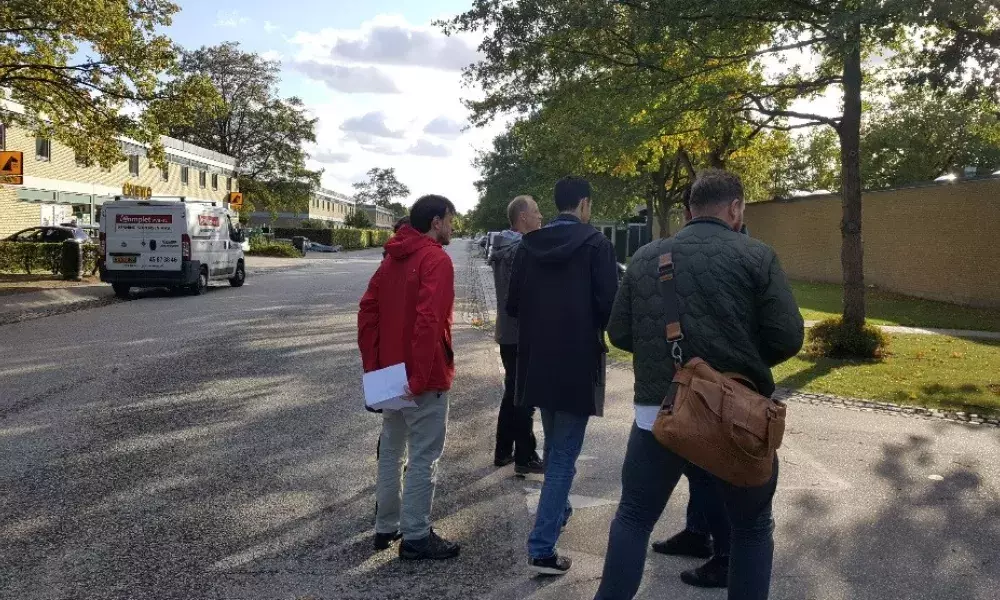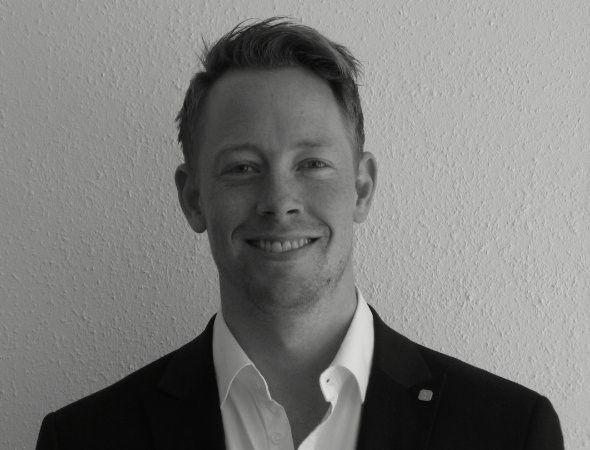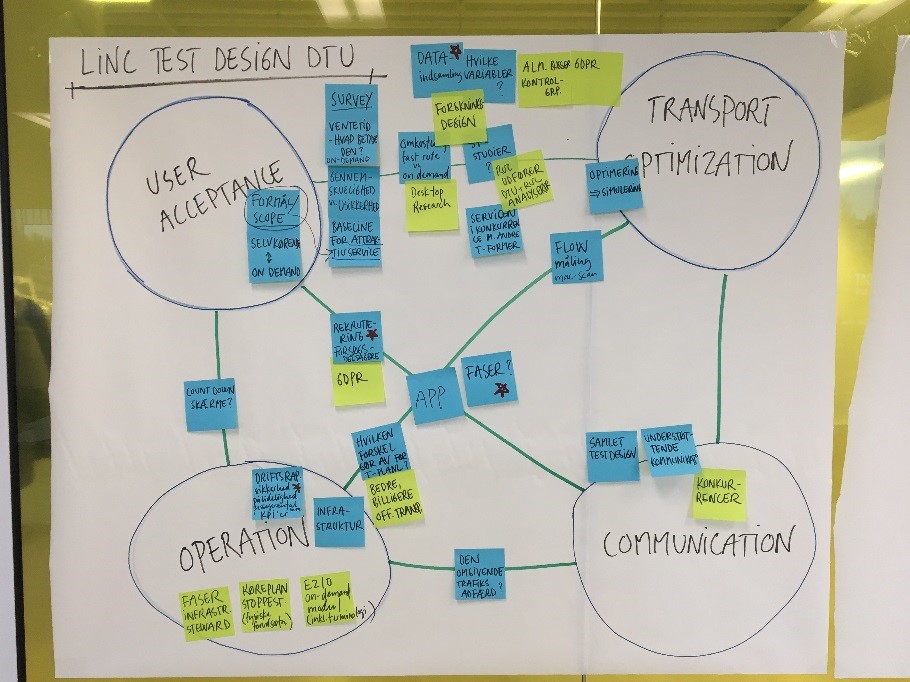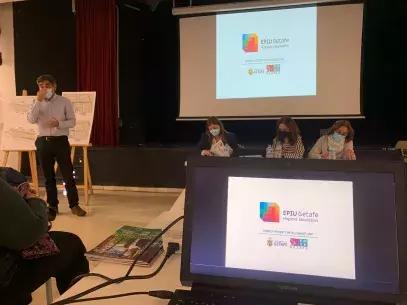
Introduction – the challenge the LINC project is approaching
Sustainable, accessible and space efficient mobility is a top priority in metropolitan regions, and one challenge is mobility to, from and within suburban regions. People need to travel to their work, to schools and universities, and to other activities. As distances to rail stations often are beyond what is experienced as walking distance, and public transport often is operated a low frequency within these areas, this transport is done by car today. Car travel generate both emissions and congestion. Recent developments with driverless vehicles open up for new opportunities, where driverless shuttles (small buses) can be used to complement and feed to public transport. The partners in the LINC project has decided to grab these new opportunities.
The LINC project has its basis in Albertslund, located 14 km west from central Copenhagen. A new light rail will be built to connect 10 municipalities and complement the existing public transport. The LINC project focus on investigating how driverless shuttles can feed to and from the light rail. The project does this by deploying driverless shuttles in two places along the future light rail: first at Technical University of Denmark (DTU) campus and later in Albertslund. See the Appendix in the end of the Zoom-in for a description of the project and project partners.
There is a hype around driverless vehicles, with high expectations on smooth, seamless mobility that is timed with public transport and operates on demand. At the same time previous real life experience of operating driverless shuttles on public streets is limited, and there are many questions that need to be answered, for example: How should the service be designed? What will be the users’ response to the service? How reliable is the operation of the vehicles? How will the technology function in real environment?
The tests are costly and involves travelers during their every-day life. Designing the tests at DTU and in Albertslund so that the most value can be obtained from them is crucial for the LINC project.

Jens Dahlstrøm coordinator for the test design at DTU Campus
Here we zoom in on the LINC project’s work with the test design for their first test at DTU campus by talking with Jens Dahlstrøm, who is leading the test design process in LINC.
What is your role in the project?
I am the primary contact person and coordinator for DTU in the project, and also coordinator for the test design process for the DTU test. From DTU there are two research departments, DTU Management Engineering’s Transport Division and DTU Compute, and two administrative departments, Facility Management and the office for Innovation and Sector Services (AIS), engaged in the LINC project. These four departments have different roles in the project: The Transport Research group designs the transport optimization models, i.e. the dynamic routing scenarios, for the actual testing and for future scenarios. DTU Compute with IBM develops the mobile application that the users will use to access the bus and give feedback on their experience. The Facility Management department is the “customer” for the DTU test sites – they want to understand how the service can be used to improve the Campus. We at AIS coordinates the work at DTU and have the contact with the university top management and the LINC project management.
What is the aim of the test design?
The aim is to make sure that we reach the project goal and the LINC vision, and answer as many as possible of the open questions during the limited time we have for the tests. At DTU the test will be 6 months. The LINC vision has been the starting point for all workshops. We have also connected each test that we plan to do to the vision.
What was your starting point for the test design?
The research questions that the partners in the project have creates the starting point for the test design. The first step was to review the research questions. When we wrote them in the first place we had limited knowledge regarding the details about the shuttles, such as their technical capacity or other operational limitations. Now, the shuttles are procured, and we have revised the research questions with respect to what is actually possible to do with them.
This process with revising the research questions has also been important for the communication strategy, and now we can better communicate details about the aim of the project.

Work in progress, identifying dependencies between research questions
How did you secure that you design the test so that each research question can be replied to?
At one of our workshops, we went through the research questions and identified the tests needed to answer each of them. Then it also became obvious that there are conflicts between the tests. For example, one central research question is: How do the users perceive riding a driverless bus, and the service as a whole? Another central research question is: How to make optimal dynamic routes? To investigate this second question, one wants to test as many different types of routing as possible, but that is in conflict with the first question, where one wants as stable routing as possible to not confuse the users.
Can you give some more examples of research questions you want to study?
We are interested in user-related questions such as How is the perceived safety in and around the shuttle? At the DTU Campus there are many bikers and people walking, so we want to investigate how they interact with the shuttle.
Many questions also arise around our aim to test a demand responsive service: Are bus stops necessary? Will users use the app? Which strategies should be used for the demand responsive service? For example, one could have a strategy that serves many passengers but with longer travel times, or a strategy that serves a few passengers at a higher speed and shorter travel times.
Of course, operational reliability and uptime of the bus and the service is highly relevant, and questions about how often and in what situations the steward must intervene. This also relates to questions about how infrastructure can be updated, and how other road users, e.g. bikers, will interfere with the bus.
How do you select the users for the test?
We discussed the selection of users a lot. One strategy is to have a dedicated group of about 500-1000 persons that has signed up for the service and that have the aim to use it frequently. However, there is a risk that users drop off during the test period and we do not get enough data. Another strategy is to make the tests open to everyone. Then we would get many different opinions but with the risk of “tourism”, i.e. that people just try it once. We took the middle way and defined three user groups; the service will be open for everyone, there will also be invited test persons who are willing to evaluate and give feedback on the service, and, lastly there will be a dedicated group of informants.
To reply all your research questions, you will need to collect data of various kinds. There can be many challenges related to data collection and who get access to what data. What are your plans for data collection?
We have created a structure for which data that needs to be collected, how we collect it, and how it can be shared between the different partners. We hope that by thinking this through in advance we can avoid problems later in the project.
There are many partners in the project, have they all been engaged in the test design.
Yes, all partners have been engaged in the test design but as the partners have different roles and naturally different interests in the project, their engagement has been different. The universities focus on research, while other partners are more engaged in questions related to the operation of the buses or the implementation of the mobile application.
With so many partners and so many research questions, I guess there has been many different wills? What has been the most difficult to agree on?
In many decisions there are trade-offs. For example, how big part of the test should include the dynamic routing in contrast to operational tests and traditional, scheduled operation? Sometimes it has been difficult to make decision about the trade-offs as we have quite a distributed organization with WP leaders, me at the test design coordinator, the project leaders. This distributed organization is often effective, but I have also learned that it could be good to have someone appointed that makes the final decision.
What has been most challenging in the making the research plan?
I don’t want to create a test design that is a monster, something that is too detailed. We are working hard to ensure that all partners are engaged, but without forcing them into too many details. We need to focus on what is most important.
Furthermore, the actual start of the test has been delayed due to the complicated process of getting a permit for operating driverless busses on public streets. This has given us more time to work with the research plan, but it is also a challenge since we constantly identify more and more tests that we would like to put in the test design.
What is the most fun with the project?
The energy in the group, everyone is very engaged even if the actual test hasn’t started yet!
I also enjoy the collaboration between the universities DTU and RUC. The researchers have different research approaches but are complementing each other and I can see how they adopt to each other’s way of thinking.
Finally, what would be your advice to others in similar situations?
We started the test design process early, and that has been good – there are a lot of interdependencies between research questions that need to be cleared out.
It has also been good to have communication persons involved in the process. As we are working with users in their everyday lives, we need to secure how we communicate with them. There will be real users in the project, and we want to understand how the service can fit into their daily life. It will be important to keep users informed without over-informing them. However, that makes the working group larger. It is a trade¬-off between having a working group that is large enough to involve everyone needed but small enough to have effective meetings.
My final advice is to make sure that you have a clear decision process.
About this resource
The Urban Innovative Actions (UIA) is a European Union initiative that provided funding to urban areas across Europe to test new and unproven solutions to urban challenges. The initiative had a total ERDF budget of €372 million for 2014-2020.
Similar content




